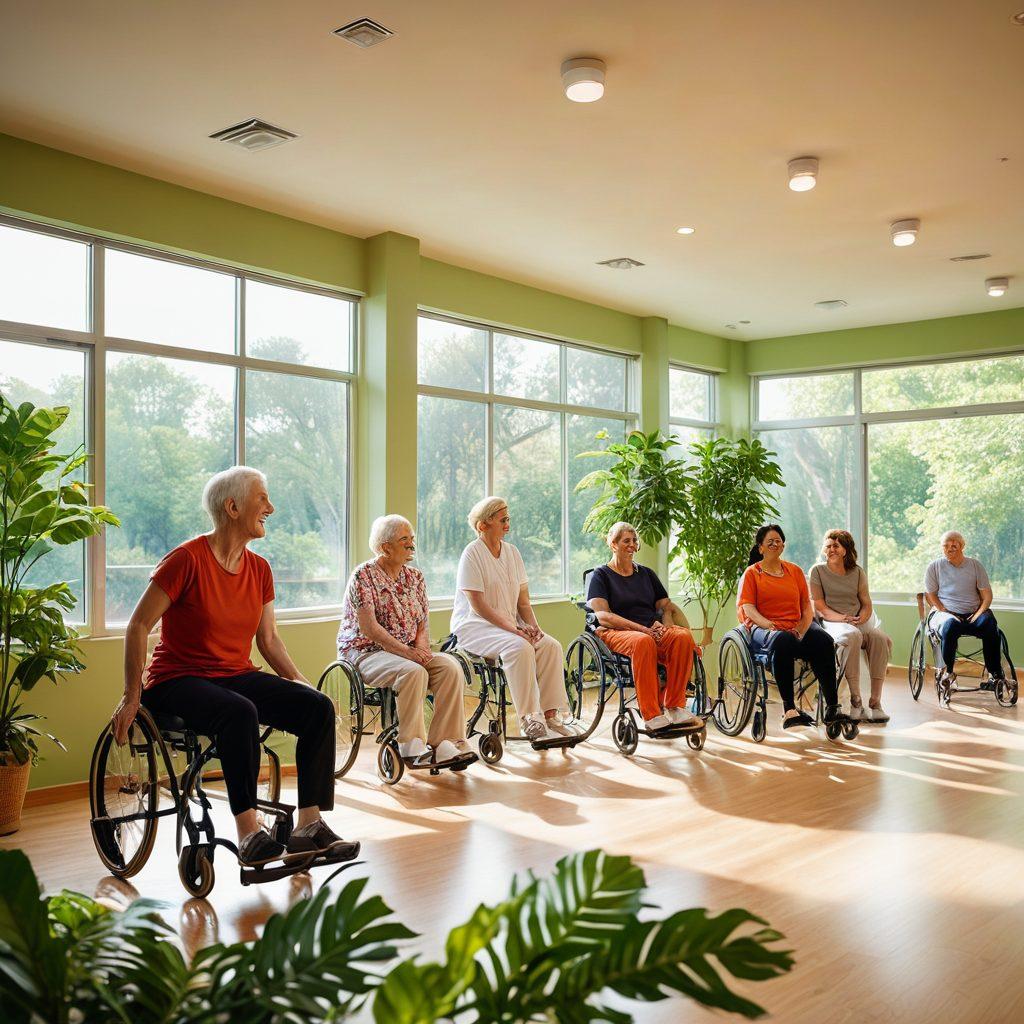Unlocking Potential: The Bobath Approach to Neurorehabilitation and Movement Therapy
Imagine a world where every movement has a purpose. A world where the act of reaching for a glass or taking a step doesn’t just mean mobility, but signifies a journey of recovery and rediscovery of one’s body. This is the essence of the Bobath approach to neurorehabilitation—a powerful method harnessing neuroplasticity to aid patients with neurological disorders. It’s not just about regaining lost functional abilities; it’s about unlocking potential and building a future where movement is a possibility, not a limitation.
The Bobath concept, developed by Berta and Karel Bobath, is rooted in the understanding that the brain is capable of reorganizing itself through neuroplasticity. But how does this transformation take place? Through innovative strategies in movement therapy, the Bobath approach utilizes a wide array of physiotherapeutic techniques. These include targeted therapeutic exercises, personalized movement analysis, and adaptive techniques tailored to the unique needs of each individual. Closing such gaps in motor skills isn’t merely about repetition; it’s about creating meaningful connections between the mind and body.
Picture a child with cerebral palsy diving into the miraculous world of movement therapy. Each session with their therapist unveils a new potential, a milestone achieved. Perhaps it’s grabbing a toy for the first time using improved fine motor skills, or taking those first hesitant steps that led to joyous laughter. It’s these little victories that define the Bobath treatment, where sensory integration fosters an enriching rehabilitation experience and builds foundational gross motor development. What if every child had access to such empowering therapies?
Incorporating patient-centered therapy practices is crucial in the Bobath approach. Each patient’s journey is distinct, shaped by their own experiences and aspirations. By engaging patients in their rehabilitation techniques and promoting active participation, therapists cultivate an environment of trust and motivation. Imagine a therapist guiding a patient through a personalized exercise therapy routine, one that emphasizes functional rehabilitation rather than just mechanistic movements. What greater gift could there be than the agency of control during recovery?
When we consider neurorehabilitation through the lens of the Bobath approach, we realize that it’s about more than recovery—it's a celebration of resilience, adaptability, and growth. Patients are not just participants; they’re co-creators of their therapy journey. By employing innovative rehabilitation techniques that prioritize neuroplasticity, the Bobath approach emphasizes that with the right support, everyone has the capacity to reclaim their movement and achieve their fitness goals. So, the next time you think of rehabilitation, remember it might just be the beginning of unlocking your true potential.
Transforming Lives: Patient-Centered Therapy and Functional Rehabilitation Techniques
Have you ever watched someone struggle to take a single step and felt a rush of empathy? Or maybe you’ve experienced the uphill battle of rehabilitation after an injury or illness. The journey of regaining movement and motor skills is not just about the physical challenges; it's a profoundly emotional experience as well. This is where the Bobath approach to neurorehabilitation shines, promising not only recovery but the transformation of lives through patient-centered therapy and functional rehabilitation techniques. It emphasizes a holistic perspective that celebrates every small victory along the journey to rediscovering one's capabilities.
The Bobath concept emerges from a deep understanding of neuroplasticity—the brain's incredible ability to reorganize itself. This principle lies at the heart of neurological therapy, particularly in the Bobath treatment, where therapists employ a range of physiotherapeutic techniques to address sensory integration and practical motor skills. Imagine a world where your doctor or therapist assesses your unique situation, crafts a tailored program just for you, and walks alongside you through each step of the rehabilitation process. The Bobath approach not only prioritizes the individual's needs but empowers them to reclaim their independence.
What sets the Bobath approach apart from traditional therapy practices is its commitment to viewing the patient as an active participant in their recovery. Through therapeutic exercises that target both gross motor development and fine motor skills, patients engage in movement analysis that identifies their strengths and areas for improvement. A simple question emerges: how do we measure progress in rehabilitation? The answer lies in the small milestones—like grasping a spoon, standing up unassisted, or completing a puzzle. Each accomplishment represents not just physical recovery but a restoration of self-confidence.
The power of the Bobath approach extends beyond just movement therapy; it integrates principles of exercise therapy for total body engagement. Patients are encouraged to explore adaptive techniques that facilitate their recovery in a supportive environment. The use of functional rehabilitation techniques brings an element of practicality to the therapy, ensuring that the skills learned within therapy settings translate seamlessly into everyday activities. Whether it’s navigating through a crowded room or simply reaching for a cup of water, every motion is an opportunity for healing and growth.
In a world where clinical rehabilitation can often seem impersonal and mechanized, adopting the Bobath approach showcases perhaps the most significant takeaway: therapy is profoundly personal. It ignites a new narrative—one where recovery does not solely focus on the body but envelops the spirit. Are you ready to challenge the status quo? Let's remember that each person's journey is unique, filled with challenges, but also endless possibilities. With the Bobath concept as a guiding light, rehabilitation transforms from a regimen into a celebration of human resilience and creativity in movement.
Movement Matters: Exploring the Impact of the Bobath Concept on Motor Skills Development
In the intricate dance of life, movement is our rhythm. Imagine a child taking their first wobbly steps, a stroke survivor reclaiming their daily routines, or an elderly person regaining the strength to lift a grandchild. These moments, woven together by movement, tell the story of resilience, determination, and healing. In the realm of neurorehabilitation, the **Bobath approach** emerges as a powerful ally, offering innovative techniques that significantly enhance **motor skills development**. It invites curiosity and hope as we delve into the profound impact of the **Bobath concept** on people's lives.
At the core of the **Bobath treatment** lies the understanding that movement is not just a series of mechanical actions; it's a complex interplay of neurological processes. **Neuroplasticity**, the brain's remarkable ability to reorganize itself, plays a pivotal role here. Intriguingly, when we engage in targeted **movement therapy**, we’re not just retraining muscles; we’re fostering a healing environment for the brain. Have you ever considered how the simple act of reaching for an object can evoke a cascade of neural connections? This emphasizes the relevance of adaptive techniques in **clinical rehabilitation**, shedding light on how even the slightest movement can elicit significant change.
One of the gems of the **Bobath approach** lies in its emphasis on personalized care—what we call **patient-centered therapy**. Each individual is unique, and so are their challenges. This approach celebrates diversity and tailors rehabilitation efforts to meet specific needs, seamlessly integrating **therapeutic exercises** that resonate with patients. From enhancing **fine motor skills** in young children to facilitating **gross motor development** in adults recovering from injuries, the **Bobath treatment** offers an array of options that empower individuals along their rehabilitation journey. Have you experienced a rehabilitation strategy that transformed your outlook?
Imagine a therapy session where each movement is analyzed and refined through a lens of encouragement and hope. That’s what **movement analysis** in the **Bobath approach** strives to accomplish. It is more than mere observation; it is an open dialogue between therapist and patient. Together, they explore **physiotherapeutic techniques** that promote **functional rehabilitation**. For instance, could emphasizing trunk control significantly influence lower limb recovery? Absolutely! The **Bobath approach** challenges us to think critically and creatively about how we engage the body and mind in the healing process.
As we draw closer to understanding the full impact of movement, let’s not dismiss the potency of **exercise therapy**. With every step taken or each stretch made, we reinforce pathways that contribute to recovery. Furthermore, the integration of **sensory integration** techniques amplifies these benefits, ensuring a well-rounded approach to rehabilitation. The journey to reclaiming movement is akin to sculpting a masterpiece; it requires patience, practice, and at times, a little imagination. What could be more inspiring than a story about recovery that begins with a single step?


